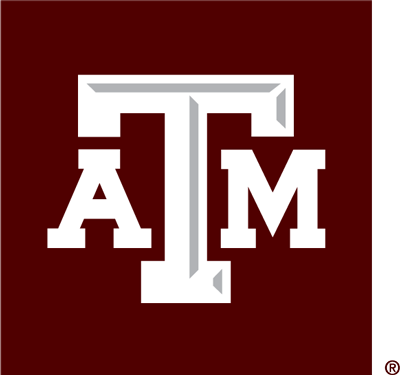Biography
Research Interests
Bacteria have a limited behavioral repertoire. Their most conspicuous behavior is chemotaxis – the pursuit of molecules that are favorable to acquire and the avoidance of chemicals that are best to avoid. The simplicity of bacterial motility and chemotaxis and the amenability of the model species Escherichia coli to genetic, biochemical and physiological manipulation have facilitated rapid advances in understanding the molecular mechanisms of biological energy conversion and signal transduction.
Our laboratory studies the inputs and outputs of chemotaxis. Ligands interact with the periplasmic receptor domain of a chemotactic signal transducer that spans the cell membrane. This interaction is converted into an intracellular signal that is communicated to the flagella. Molecules can be sensed either by binding directly to a receptor or by first interacting with a periplasmic binding protein, which then interacts with a receptor.
Our interest has recently focused on two molecules that serve not as nutrients but rather as specific biological signals. One of these is the ubiquitous host neurotransmitter and hormone norepinephrine (NE), about half of which is present in the gastrointestinal tract. We have discovered that E. coli first converts NE into the compound dihydroxymandelic acid (DHMA) by virtue of two enzymes whose production is induced by NE. DHMA then binds to the same site on the serine chemoreceptor Tsr as serine itself to elicit an attractant signal. Concentrations of DHMA as low as 5 nanomolar can be detected. We hypothesize that chemotaxis to NE/DHMA directs motile bacteria, including pathogens, to preferred sites of colonization on the epithelium of the GI tract, suggesting that blocking such chemotaxis may serve as a protective measure against GI tract infection.
The second compound is the quorum-sensing signal, autoinducer-2 (AI-2), which is produced by a wide range of bacteria, including Gram-positive and Gram-negative species. Biofilms are a particularly rich source of AI-2. AI-2 is first recognized by the periplasmic binding protein LsrB, which, after it binds AI-2, interacts with Tsr at a different site than DHMA. Thus, DHMA and AI-2 can be sensed simultaneously. We are studying the possibility that planktonic bacteria are attracted to biofilms by following gradients of AI-2. Intervention in this process may allow inhibition of biofilm formation where it is not desired and production of biofilms where they are desired.
Educational Background
- B.A., 1969, Johns Hopkins University, Biology.
- Ph.D., 1976, Stanford University, Biology.
- Postdoctoral research: University of Colorado, California Institute of Technology.
- Previous faculty appointment: University of Konstanz.
Selected Publications
- Manson, MD, Nan, B, Lele, PP, Liu, J, Duncan, TM. Editorial: Biological rotary nanomotors. Front Microbiol. 2022;13 :1012681. doi: 10.3389/fmicb.2022.1012681. PubMed PMID:36212881 PubMed Central PMC9532838.
- Manson, MD. Rotary Nanomotors in the Rear View Mirror. Front Microbiol. 2022;13 :873573. doi: 10.3389/fmicb.2022.873573. PubMed PMID:35572653 PubMed Central PMC9100566.
- Blair, DF, Manson, MD. Howard Berg (1934-2021). Curr Biol. 2022;32 (6):R252-R254. doi: 10.1016/j.cub.2022.02.054. PubMed PMID:35349805 .
- Antani, JD, Gupta, R, Lee, AH, Rhee, KY, Manson, MD, Lele, PP et al.. Mechanosensitive recruitment of stator units promotes binding of the response regulator CheY-P to the flagellar motor. Nat Commun. 2021;12 (1):5442. doi: 10.1038/s41467-021-25774-2. PubMed PMID:34521846 PubMed Central PMC8440544.
- Manson, MD. Howard Berg's Random Walk through Biology. J Bacteriol. 2020;202 (23):. doi: 10.1128/JB.00494-20. PubMed PMID:32958632 PubMed Central PMC7648147.
- Yang, J, Chawla, R, Rhee, KY, Gupta, R, Manson, MD, Jayaraman, A et al.. Biphasic chemotaxis of Escherichia coli to the microbiota metabolite indole. Proc Natl Acad Sci U S A. 2020;117 (11):6114-6120. doi: 10.1073/pnas.1916974117. PubMed PMID:32123098 PubMed Central PMC7084101.
- Orr, AA, Yang, J, Sule, N, Chawla, R, Hull, KG, Zhu, M et al.. Molecular Mechanism for Attractant Signaling to DHMA by E. coli Tsr. Biophys J. 2020;118 (2):492-504. doi: 10.1016/j.bpj.2019.11.3382. PubMed PMID:31839263 PubMed Central PMC6976796.
- Manson, MD. pH Sensing in Bacillus subtilis: a New Path to a Common Goal. J Bacteriol. 2020;202 (4):. doi: 10.1128/JB.00701-19. PubMed PMID:31792011 PubMed Central PMC6989801.
- Manson, MD. One Basic Blueprint, Many Different Motors. J Bacteriol. 2019;201 (8):. doi: 10.1128/JB.00019-19. PubMed PMID:30718302 PubMed Central PMC6436351.
- Manson, MD. Transmembrane Signal Transduction in Bacterial Chemosensing. Methods Mol Biol. 2018;1729 :7-19. doi: 10.1007/978-1-4939-7577-8_2. PubMed PMID:29429078 .

